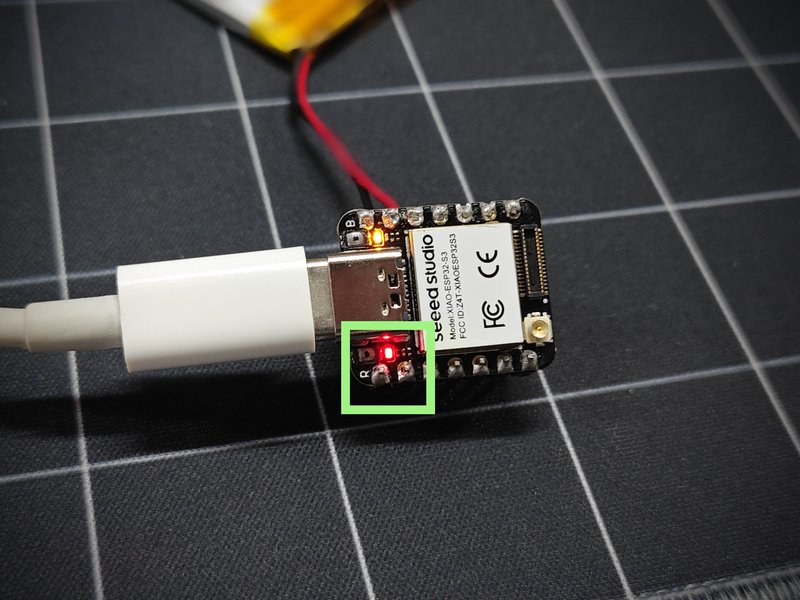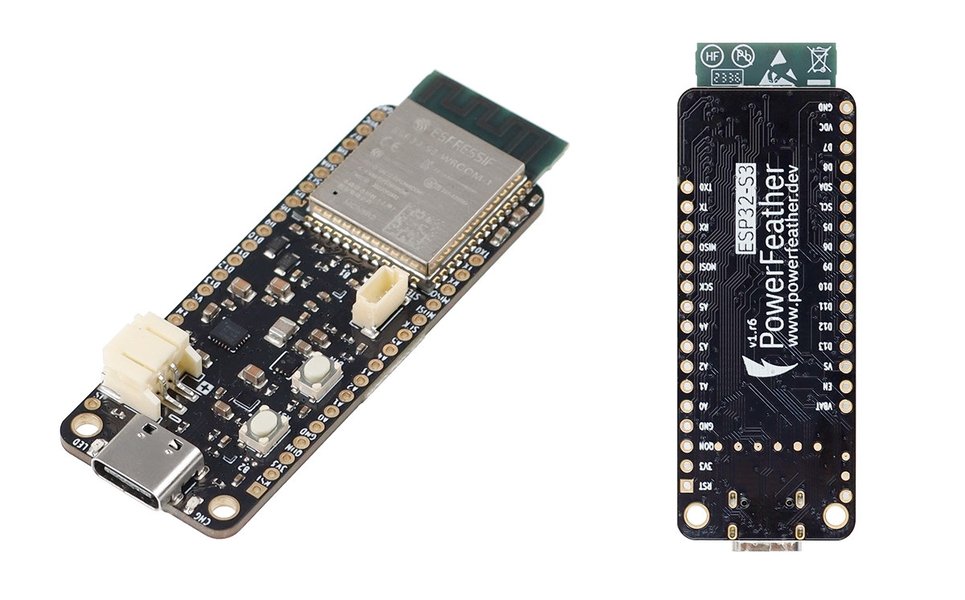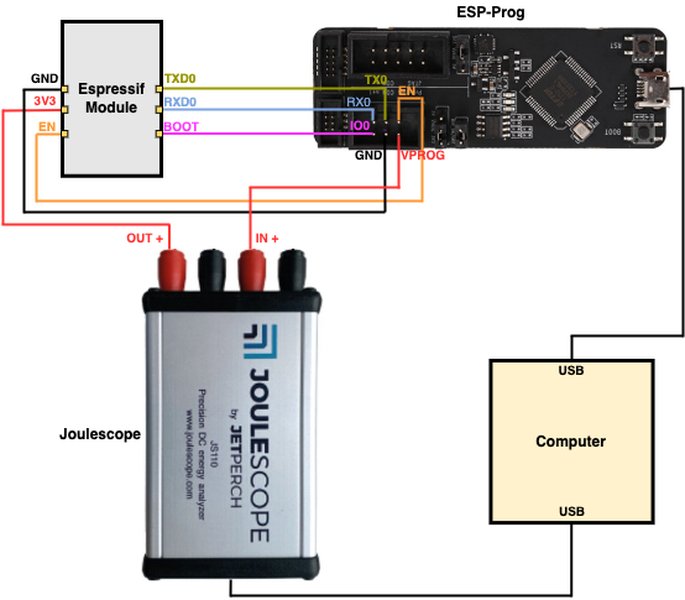
Unlock Extended Battery Life: Mastering ESP32-S3 Power Optimization for Your Voice Assistant
Discover crucial hardware and software strategies to dramatically reduce energy consumption in your battery-powered ESP32-S3 voice projects.
Essential Insights for Power Efficiency
- Maximize Sleep Modes: Aggressively utilize Deep-sleep and Light-sleep modes, waking the ESP32-S3 only when necessary, such as for wake word detection or periodic tasks.
- Smart Peripheral Management: Disable unused peripherals and choose low-power components. Control power to audio subsystems, activating them only during voice interaction.
- On-Device Wake Word Detection: Implement local wake word detection (e.g., using microWakeWord) to keep the main CPU in a low-power state for the majority of the time.
Understanding ESP32-S3 Power States
The ESP32-S3 offers several power modes, each with different characteristics and power consumption levels. Effectively managing these states is fundamental to optimizing battery life for your voice assistant. The ESP-IDF (Espressif IoT Development Framework) provides robust power management APIs to control these states.
Comparing Key Power Modes
The following table outlines the primary power modes available on the ESP32-S3 and their relevance to a battery-powered voice assistant:
| Power Mode | Typical Current Consumption | CPU & Memory State | Wake-up Sources | Voice Assistant Use Case |
|---|---|---|---|---|
| Active Mode | Tens to hundreds of mA (depends on CPU freq, peripherals) | CPU on, all peripherals active, RAM retained. | N/A (already active) | Processing voice commands, Wi-Fi/Bluetooth communication, active computations. |
| Light-Sleep Mode | ~240 µA to a few mA (varies with active peripherals) | CPU clock gated, most peripherals suspended, RAM retained. | Timer, GPIO, UART, ULP coprocessor. | Waiting for wake word (if ULP or low-power wake word engine handles initial detection), periodic checks, maintaining quick responsiveness. |
| Deep-Sleep Mode | As low as < 20 µA (on optimized boards) to ~100 µA | CPU and most peripherals off. Only RTC memory, RTC peripherals, and ULP coprocessor can be powered. | Timer, GPIO, ULP coprocessor, touch sensor. | Extended idle periods when no voice activity is expected. Device wakes periodically or on external trigger (e.g., button press, motion sensor if ULP is monitoring). |
| Hibernation Mode | ~5 µA (with 8 MHz RTC clock) | Almost everything off, including RTC memory (except for one RTC timer register for wake-up). | RTC Timer, specific GPIOs. | Very long-term standby; however, context is lost, requiring a full boot, which might not be ideal for responsive voice assistants unless for extreme power saving during prolonged inactivity. |
Note: Current consumption figures are approximate and can vary significantly based on the specific ESP32-S3 module, board design, active peripherals, and software configuration.
Core Optimization Strategies for Your Voice Assistant
Achieving optimal power consumption requires a multi-faceted approach, combining intelligent sleep mode management, dynamic adjustments to system clocks, and careful control over peripherals.

A compact ESP32-S3 module like the Seeed Studio XIAO ESP32S3, suitable for battery-powered projects.
Leveraging Sleep Modes Effectively
The ESP32-S3's sleep modes are your primary tools for drastic power reduction.
Deep-Sleep Mode: The Ultimate Power Saver
In Deep-sleep mode, the CPU, most RAM, and all digital peripherals are powered down. Only the Real-Time Clock (RTC) controller, ULP coprocessor (if enabled), and RTC GPIOs remain active. This mode can achieve current consumption below 20 µA on well-designed boards like the PowerFeather ESP32-S3. For a voice assistant, this means the device can be in an ultra-low power state most of the time, waking only upon a specific trigger.
Light-Sleep Mode: Balancing Power and Responsiveness
Light-sleep mode suspends the CPU clock and most peripherals while retaining RAM contents. This allows for a much quicker wake-up time compared to Deep-sleep. It's ideal when the voice assistant needs to wake frequently for tasks like checking for a wake word via an external, low-power detector or performing brief periodic updates. The ESP-IDF power management can automatically enter Light-sleep when the CPU is idle.
Configuring Wake-up Sources
Both Deep-sleep and Light-sleep modes can be exited via various wake-up sources:
- Timer: Wake up at predefined intervals (e.g., to periodically check for audio input).
- External Interrupts (GPIOs): Wake up when a GPIO pin changes state (e.g., a button press, or a signal from a dedicated wake-word detection IC).
- ULP Coprocessor: The Ultra-Low Power coprocessor can perform simple tasks while the main CPU is asleep and wake it when necessary.
- Touch Sensor: Wake up via capacitive touch inputs.
Dynamic Frequency Scaling (DFS) and Clock Gating
The ESP32-S3 supports Dynamic Frequency Scaling, allowing the CPU frequency to be adjusted on the fly. Running the CPU at a lower frequency (e.g., 40 MHz instead of the maximum 240 MHz) during less demanding tasks, like idle listening or simple background processes, significantly reduces power consumption. The ESP-IDF power management algorithm can automatically adjust the CPU and APB (Advanced Peripheral Bus) frequencies based on system load and configured power management locks. Clock gating further enhances power saving by disabling the clock signals to peripherals that are not currently in use.
Utilizing the RISC-V ULP Coprocessor
The ESP32-S3 includes a RISC-V ULP coprocessor designed to perform tasks while the main CPUs are in Deep-sleep. For a voice assistant, the ULP coprocessor can be programmed to:
- Monitor a microphone for sound activity (e.g., basic sound level detection).
- Perform very simple sensor readings.
- Wake the main CPU only when a potential event of interest (like a sound above a threshold) is detected.
Peripheral Power Management
Disabling Unused Peripherals
Actively disable or power down any peripherals not essential for the current operation of the voice assistant. This includes:
- Wi-Fi and Bluetooth radios when not actively communicating.
- Unused UART, SPI, I2C interfaces.
- Onboard LEDs (status LEDs, RGB LEDs like WS2812B) can be a surprising source of power drain. If possible, disable them in software or via hardware jumpers.
- Other sensors or modules connected to the ESP32-S3.
Choosing Low-Power Components
When designing or selecting hardware for your voice assistant:
- Opt for microphones (e.g., I2S INMP441) and amplifiers (e.g., MAX98357A) known for their low power consumption.
- Select voltage regulators with very low quiescent current (the current consumed by the regulator itself when the ESP32-S3 is in a sleep state).
Optimizing for Voice Assistant Functionality
Specific features of voice assistants, particularly wake word detection and audio processing, require careful power management.
Efficient Wake Word Detection
Continuous audio streaming and processing for wake word detection can quickly drain a battery. The most effective strategy is to use on-device, low-power wake word detection:
- Dedicated Hardware/Software: Solutions like `microWakeWord` can run on the ESP32-S3 itself or an auxiliary low-power MCU/DSP, allowing the main ESP32-S3 cores to remain in Light-sleep or Deep-sleep until the wake word is detected.
- ULP Coprocessor Assistance: While the ULP might not handle complex wake word models, it can perform initial sound activity detection to wake a more capable, but still low-power, section of the ESP32-S3 for more refined wake word spotting.
Audio Subsystem Optimization
The microphone, amplifier, and speaker are key components of a voice assistant:
- Power Gating: If possible, design your hardware to completely cut power to the audio amplifier (and even the microphone if it has significant idle draw) when the device is not actively listening or speaking. This can often be achieved using a MOSFET controlled by a GPIO.
- Efficient Codecs: Use efficient audio codecs and processing algorithms to minimize CPU load during active audio handling.
- Hardware Acceleration: The ESP32-S3 has AI acceleration instructions that can be leveraged for more efficient audio processing tasks, potentially reducing the time spent in active mode.
Software and Firmware Best Practices
Firmware design plays a critical role in power optimization.
ESP-IDF Power Management API
The ESP-IDF provides a comprehensive power management API. Key features include:
- Power Management Locks: Applications can acquire `ESP_PM_CPU_FREQ_MAX` or `ESP_PM_APB_FREQ_MAX` locks to temporarily prevent the system from reducing CPU or APB frequency, or `ESP_PM_NO_LIGHT_SLEEP` locks to prevent automatic Light-sleep. These locks should be released as soon as the high-performance or always-on requirement is no longer needed.
- Automatic Light-Sleep: The system can automatically enter Light-sleep when no tasks are running and no locks prevent it.
- Dynamic Frequency Scaling Configuration: Fine-tune DFS behavior.
Efficient Code and Algorithms
During active periods, optimize your code for speed and efficiency. The less time the CPU spends actively processing, the less power it consumes. This includes:
- Minimizing unnecessary computations.
- Using optimized libraries.
- Compiling with optimization flags (e.g., `-Os` for size, which can sometimes indirectly improve power by reducing cache misses and instruction fetches).
Boot Time Reduction
Booting the ESP32-S3 consumes a relatively high amount of power. While not always critical for an always-on voice assistant, if your device reboots frequently or wakes from a state that requires a full boot (like Hibernation), optimizing boot time can save energy. This involves minimizing initialization code and potentially using optimized bootloader configurations.
Hardware Considerations for Low Power
The choice of ESP32-S3 board and surrounding power circuitry is crucial.

The ESP32-S3 PowerFeather, a board specifically designed for low-power applications, achieving sub-20µA deep sleep currents.
Board Selection
Not all ESP32-S3 development boards are created equal when it comes to power consumption. Look for boards specifically designed for low-power applications. These often feature:
- Low quiescent current (Iq) voltage regulators.
- Minimal extraneous components that draw power (e.g., USB-to-UART chips that can be powered down, minimal LEDs).
- Optimized PCB layout for power efficiency.
Power Supply Design
For battery-powered devices:
- Efficient Voltage Regulators: Use high-efficiency DC-DC converters (buck, boost, or buck-boost depending on battery voltage and ESP32-S3 requirements) rather than LDOs if there's a significant voltage difference, as LDOs dissipate excess voltage as heat. Ensure the chosen regulator has a very low quiescent current.
- Battery Chemistry: LiPo or Li-Ion batteries are common choices due to their energy density. Consider battery management ICs for safe charging and discharging.
- Minimize Leakage: Ensure components like capacitors have low leakage currents.

A typical hardware setup for measuring ESP32-S3 current consumption, essential for verifying optimization efforts. (Source: Espressif)
Thorough testing and measurement with a multimeter or specialized power profiling tools are essential to quantify the impact of each optimization and identify remaining power hogs.
Visualizing Optimization Impact: A Comparative Look
Different power-saving techniques offer varying degrees of impact on battery life and may introduce complexities or affect responsiveness. The radar chart below provides a conceptual comparison of several key strategies for an ESP32-S3 voice assistant. The scores are illustrative (1=Low, 5=High), representing potential trade-offs.
This chart highlights that while Deep Sleep offers maximal battery saving, it might impact responsiveness more if wake-up latencies are critical. Local Wake Word Detection is highly effective for battery life with minimal responsiveness impact once implemented. CPU Frequency Scaling is relatively easy to implement and offers moderate gains with low responsiveness impact.
Interconnected Power Saving Approaches
Optimizing power consumption is not about isolated tricks but a holistic strategy. The mindmap below illustrates how various techniques interconnect to achieve a low-power ESP32-S3 voice assistant.
Power Optimization"] HardwareStrategies["Hardware Strategies"] LowPowerBoard["Choose Low-Power Board"] EfficientRegulator["Efficient Voltage Regulator (Low Iq)"] ComponentSelection["Low-Power Components
(Mic, Amp)"] DisableHardware["Disable Unused Hardware
(LEDs, USB-UART via jumpers)"] PowerGating["Peripheral Power Gating
(e.g., Audio Amp)"] SoftwareStrategies["Software/Firmware Strategies"] SleepModes["Sleep Modes"] DeepSleep["Deep Sleep"] LightSleep["Light Sleep"] FrequencyScaling["Dynamic Frequency Scaling (DFS)"] ClockGating["Clock Gating"] ULP["ULP Coprocessor Usage"] ULP_WakeWord["Basic Wake Word/Sound Detect"] ULP_Sensor["Sensor Monitoring"] EfficientCode["Efficient Algorithms & Code"] BootTime["Optimize Boot Time"] SystemLevelStrategies["System-Level Strategies"] WakeWord["On-Device Wake Word Detection"] WakeWord_microWakeWord["microWakeWord"] WakeWord_HW["Dedicated Wake IC"] AudioManagement["Audio Subsystem Management"] Audio_PowerCtrl["Power Control Audio Chain"] Connectivity["Manage Connectivity (Wi-Fi/BLE)"] Conn_OffWhenIdle["Turn off when idle"] TestingMeasurement["Continuous Testing & Measurement"]
This mindmap emphasizes that optimal power saving comes from a synergistic application of hardware choices, sophisticated firmware control over sleep states and clocking, and system-level design decisions like how wake word detection is handled.
Understanding Sleep Modes Visually
For a deeper dive into how ESP32 sleep modes function and their impact on current consumption, the following video provides valuable insights. It covers various sleep modes, methods to wake the ESP32, and demonstrates current measurements, which are crucial for understanding and verifying power optimization efforts.
This video, "ESP32 Sleep Modes and Power Consumption" by Andreas Spiess, explains the different sleep modes available on ESP32 devices (including concepts applicable to the S3 variant), shows how to use them, and measures the actual current drawn. Understanding these practical aspects is key to successfully reducing power consumption in your battery-powered voice assistant.
Frequently Asked Questions (FAQ)
Recommended Further Exploration
- How can I program the ESP32-S3 ULP coprocessor for preliminary sound detection in a voice assistant?
- What are the power efficiency differences between various on-device wake word engines like microWakeWord on the ESP32-S3?
- What specific hardware design choices are critical for an ultra-low power custom PCB for an ESP32-S3 voice assistant?
- What are the best tools and techniques for accurately measuring and profiling ESP32-S3 power consumption during voice assistant operation?
References
Last updated May 7, 2025